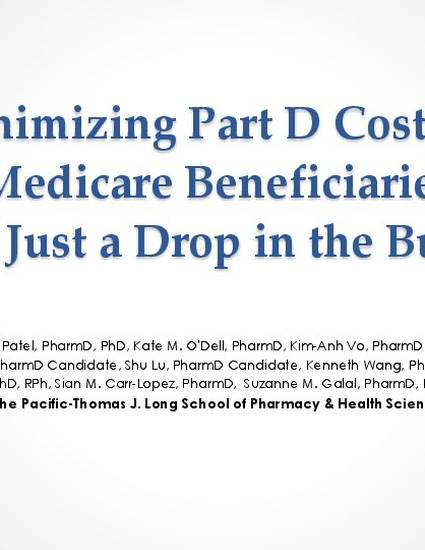
Background: Although Medicare Part D has been largely successful in providing prescription drug coverage for Medicare beneficiaries, many continue to be burdened with unnecessary out-of-pocket (OOP) costs. Objective: This study sought to identify the frequency and impact of cost-lowering strategies used to assist Medicare beneficiaries with their Part D drug costs. Methods: Twelve outreach events were conducted in 6 different cities throughout Northern/Central California during the 2013 Medicare open enrollment period. During each event, trained student pharmacists under the supervision of licensed pharmacists assisted beneficiaries to minimize their OOP costs. Individualized assistance included: optimization of the beneficiary's Part D plan, application for the low-income subsidy (LIS) and/or pharmaceutical assistance programs (PAP), and identification of cheaper therapeutic alternatives based on the beneficiary's current prescription medications. Results: In total, 621 beneficiaries were assisted with their Part D plan, of which 412 (67.3%) were enrolled in a stand-alone prescription drug plan (PDP). Over 80% of those enrolled in a PDP could reduce costs by switching to a different PDP in the upcoming year. In aggregate, these beneficiaries could save $426,264 on their OOP costs. Nineteen non-subsidy recipients were deemed potentially LIS-eligible and had their application submitted online to Social Security on their behalf. Thirty-seven beneficiaries indicated having difficulty paying for their medication(s) and were assisted with PAP applications/discount programs. Finally, cheaper therapeutic alternatives were identified for 10 patients and prescribers accepted 90% of our recommendations. Conclusion: Targeted assistance to beneficiaries may lower their OOP costs and thereby help decrease cost-related medication non-adherence.
Available at: http://works.bepress.com/joseph-woelfel/61/

Click here to view the Conference website
Click here to view an audio and video recordings of this presentation